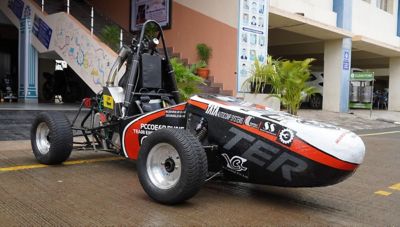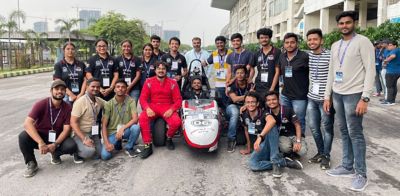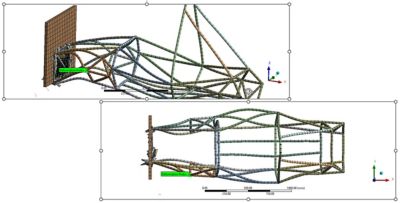-
-
Access Free Student Software
Ansys empowers the next generation of engineers
Students get free access to world-class simulation software.
-
Connect with Ansys Now!
Design your future
Connect with Ansys to explore how simulation can power your next breakthrough.
Countries & Regions
Free Trials
Products & Services
Learn
About
Back
Products & Services
Back
Learn
Ansys empowers the next generation of engineers
Students get free access to world-class simulation software.
Back
About
Design your future
Connect with Ansys to explore how simulation can power your next breakthrough.
Free Trials
ANSYS BLOG
January 8, 2024
Supported by Ansys, Team Eminent Racing Is Off to a Winning Start
Around the world, Ansys software is helping drive the success of student design teams. One of the student organizations that’s leveraged simulation to achieve early, impressive success is Team Eminent Racing from Pimpri Chinchwad College of Engineering & Research in Pune, India. Empowering student teams with the support of an Ansys Student Team Partnership unlocks a world of opportunities to elevate both their competitive edge and their mastery of simulation software. Through this partnership, every student team gains access to free research software, learning resources, and support.
The Pimpri Chinchwad College team competes in the Supra series, sponsored by SAEINDIA, a strategic alliance partner of SAE International. SAEINDIA’s Supra competition is a national Formula SAE competition that invites student engineers to design, build, and demonstrate a prototype Formula One-style vehicle. It offers a unique way to test students’ theoretical knowledge in a practical context. Student vehicles are judged based on technical and safety aspects, cost and design considerations, and dynamic performance including braking and acceleration.
The 2023 competition, held in June at the Buddh International Circuit in India, hosted 38 student racing teams from across India. While it was only the second season for Team Eminent Racing, students from Pimpri Chinchwad College won first place in the prestigious computer-aided enigneering (CAE) category, finishing in sixth place overall.
With CADFEM India as a supporter, the team’s success wasn’t entirely unexpected. In its 2022 debut, Team Eminent Racing finished in eighth place overall, becoming the only first-year team in Supra history to finish in the top 10. In the CAE category, the Pimpri Chinchwad College team won second place in 2022.

Fittingly, the #6 car from Team Eminent Racing finished sixth overall in the 2023 Supra competitive season. It also won first place in the CAE category.

Team Eminent Racing at Pimpri Chinchwad College of Engineering & Research has established its technical leadership in just two seasons.
Starting From Scratch: Designing a Chassis via Simulation
What’s behind the team’s impressive early success? According to Ameya Mahamuni, technical head of Team Eminent Racing, over the past two years Ansys Mechanical has helped the team accelerate the design of the chassis, the car’s key structural component.
“The chassis is critical because it’s the main component of the vehicle, responsible for providing structural strength and also holding all the components of the vehicle, as well as the driver,” says Mahamuni.
“In designing the chassis, we looked at many software solutions on the market, and we landed on Ansys Mechanical because it’s really best in class,” he says. “It’s very simple to use, even for students. Mechanical makes it easy to simulate loads, replicate physical behaviors like compression and bending, and test material compositions. It also allows us to iterate on our designs very quickly. We can make modifications, see the effects, and immediately make additional modifications.”


Ansys Mechanical static models helped the chassis team increase the torsional stiffness of the car’s front end, providing added strength in the event of a collision.
Yash Rajendra Gaikwad, head of chassis engineering for the team, emphasizes that Mechanical not only helps the chassis team define innovations, like an AISI 4130 chromoly steel material composition, but also ensures the safety of its chassis design.
“In developing the 2023 car, we first used Ansys Mechanical to create a static structural analysis of the chassis design, which helped us arrive at its unique shape that includes a front bump,” Gaikwad says. “Our Mechanical simulations helped us increase the torsional stiffness of the car’s front end to minimize deformation and maximize safety in the event of a crash. Our Ansys simulations showed us exactly where to add additional material to the chassis.”
Student engineers also used the explicit analysis capabilities of Mechanical using Ansys LS-DYNA to predict actual deformation in the event of a head-on collision. “We conducted a crash analysis using explicit dynamics, where the vehicle was involved in a front-impact collision with a stationary rigid wall at a typical racing velocity of 65 km/hour,” says Gaikwad.
“From that analysis, we recognized where the exact points of stress would come from, and what the maximum deformation would be,” he says. “We were able to conclude that the driver would be safe during this kind of accident.”

Explicit dynamic studies created using Mechanical helped the team verify the car’s safety. In virtual crash tests, the chassis exhibited an acceptable range of deformation when it contacted a rigid wall at 65 km/hour.
In Formula SAE racing, every component of the car contributes in some way to its safety, acceleration, fuel efficiency, and other performance aspects. Both Mahamuni and Gaikwad were surprised by the far-reaching effects of a welding analysis in Mechanical, which looked closely at the small joints connecting the metal pipes that form the car’s chassis.
“We used Mechanical to join two parts of a pipe using different weld lengths and material thicknesses,” says Gaikwad. “We were able to ensure that the weld would be strong enough without adding filler material that wasn’t really needed. As a result, we reduced the weight of each welded joint by 30%.”
“That was a surprising finding,” Mahamuni says. “We realized we could apply this concept to the whole vehicle and reduce the overall weight of the car by 1.5 kg. It’s a minute change that could make a big difference in the car’s performance, without compromising safety or structural integrity at all.”

A weld analysis created in Ansys Mechanical helped reduce the weight of welding joints in the chassis by 30%, which has a significant effect on the overall weight and fuel efficiency of the car.
Gaining Professional Traction via Hands-on Experience
The team’s faculty advisor, Professor Kavidas Mate, emphasizes that these “aha” moments and hands-on lessons will have impacts that last far beyond any racing season.
“Using Ansys software bridges the theoretical world that our students experience in the classroom with the practical, physical world they will encounter as working engineers,” says Mate. “As members of the racing team, our students see firsthand the time, cost, and innovation benefits of using simulation. And those simulation skills will help them as they graduate and enter the engineering profession.”
“This was our dream when we went to the college, to manufacture a Formula One style race car,” says Mahamuni. “When we go out on the track or into the shop, we’re actually applying what we’re learning within the four walls of the college. We’re bringing our skills up to the level that’s required in the job market.
“We’re so grateful to Ansys for providing us with the licensing, training, support, and encouragement we need to realize our dream.”
Learn more about Ansys Student Team Partnerships and request your own sponsorship.